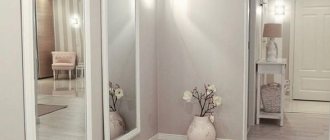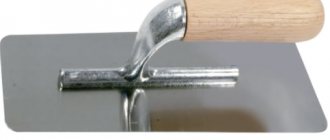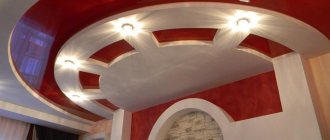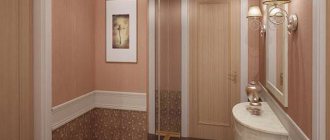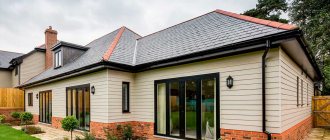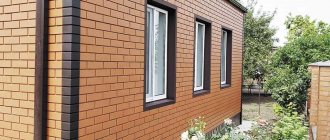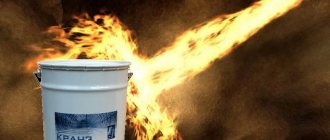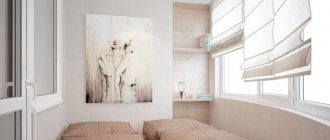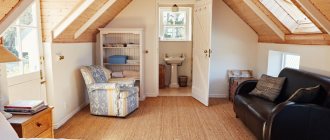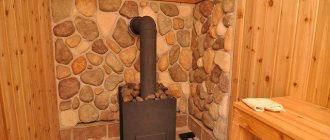Manufacturing technology of cement bonded particle boards (CPB)
The technology for manufacturing CBPB can be briefly described as the formation of a three-layer “pie” from two types of cement-bonded particle mixture: a mixture with fine-bonded aggregate forms the outer layers, and a mixture with coarse aggregate forms the inner layer. The laminated board is then molded under high pressure using hydraulic presses to achieve perfect smoothness and thickness.
Fasteners
In most cases, the sheets are attached to the frame using screws or nails. Other fasteners are used for auxiliary work, for example, when installing sheathing.
- Anchor bolts are used to fasten brackets with lathing to the main wall when installing curtain facades and partitions.
- Rivets are a rod fastening element that is closed on both sides by heads, connecting two structural elements. Rivets are used to fasten the sheathing to the brackets. Installation is carried out by a riveter.
- Nails are steel rod fastenings. Screw nails are used to fix the DSP. When the slab moves, the nail will bend, but will not cut it off. This property is especially important for inclined planes. It is better to choose galvanized hardware, especially when it comes to using products in conditions of high humidity. The length of the nail should be 2.5 times greater than the thickness of the sheet. For example, it is recommended to fasten slabs 8–10 mm thick with nails 2.5 mm long and 35 mm in diameter; 40 and 50 mm long are suitable for 12 and 16 mm.
Example of using different fastening systems
- Self-tapping screws are the most common method of fastening CBPB, since the self-tapping screw acts on tearing, which is important due to the large weight of the slab. Holes for fastenings must be made in advance; it is recommended to use a screwdriver for tightening. The principle of selecting fasteners is the same as when selecting nail sizes. Before tightening the screws, the holes are countersunk to recess the head. Fasteners equipped with a countersunk head and reinforced blades for better fastening can be used without pre-drilling holes or countersinking. It is recommended to use only self-tapping screws with anodized or galvanized coating. It is better not to use phosphated products (black screws), since after finishing the rust may show through the paint.
Application of cement bonded particle boards (CSP)
DSP is used:
- As cladding and cladding along guides or frames, vertical - for walls, partitions, racks, ventilation casings, etc., both for interior decoration and for facades.
- As an outer screen layer of a ventilated façade.
- In floor and flat roof structures.
DSP is not a serious competitor to fibreboards, plasterboard, gypsum fiberboard and bakelized plywood, due to the variation in the characteristics of these sheet materials. All these plates are in demand depending on the working conditions and the required performance qualities.
DSP board size
The standard sizes of DSP are 2.7 * 1.25 m and 3.2 * 1.25 m with gradations of thickness in mm 8; 10; 12; 16; 20; 24 and 36.
DSP for construction
| DSP board is the classic and most common building material, having a very high density and resistance to the environment. We supply only high-quality slabs from manufacturers with well-established technology. This is one of the types of wood-based panel materials, it contains cement and wood, which impart favorable technological and structural qualities to this building material. DSPs are used for both interior and exterior work, due to their increased moisture resistance and chemical and biological stability. The slabs have a homogeneous structure, are well processed, a smooth gray surface is ready for priming or painting, flammability group G1 according to GOST 30244-94, and have the same strength characteristics in both the longitudinal and transverse directions. |
DSP boards consist of wood chips of fine and medium fractions, Portland cement as a binder and special chemical additives - calcium chloride, aluminum sulfate, aluminum chloride, etc. The surface is even and smooth, because Smaller chips are used outside, and larger chips inside.
What does a DSP board consist of?
1. Portland cement - 65% 2. wood shavings - 24% 3. chemical additives - 2.5% 4. water (used at the production stage) - 8.5%
History of appearance
DSP boards were first manufactured in Switzerland by Durisol in 1970 under the trade name Duripanel. It was initially an extremely popular product to replace asbestos boards. Currently produced by 16 manufacturers worldwide, representing 18% of global cement producers. Demand for them has not changed much since they initially entered the market.
Main technical characteristics of cement-bonded particle boards (CSP)
Let us list the main characteristics of CBPB boards:
- Specific gravity (density) – 1250-1400 kg/m3. A standard DSP sheet with dimensions of 2.7 * 1.25 m and a thickness of 16 mm weighs 72.9 kg.
- Ultimate bending strength for thicknesses of 10, 12, 16 mm - 12 MPa; with a thickness of 36 mm - 9 MPa.
- Tensile strength perpendicular to the plane of the slabs is not less than 0.4 MPa.
- Modulus of elasticity in bending – not less than 3500 MPa.
- Classification by flammability - group G1 (classified as low-flammable).
- Frost resistance of 50 cycles with a guarantee of a decrease in strength by no more than 10%.
- Thermal protection properties. Thermal conductivity coefficient is 0.26 W/m*deg C.
- The value of the coefficient of linear expansion is 0.0235 mm/m*deg C.
- Vapor permeability coefficient 0.03 mg/m*h*Pa.
- Specific resistance when pulling out screws is from 4 to 7 N/m.
- Based on biostability, they are classified as class 4 products
- In terms of sound insulation - with a thickness of 12 mm, the airborne noise insulation index value is 31 dB. When laid on a reinforced concrete base made of load-bearing slabs, the penetration of impact noise with a thickness of 20 mm CBPB reduces by 16 dB. When laid on elastic materials - by 9 dB.
- Linear increases in size after exposure to water for 24 hours are 2% in thickness and 0.3% in length.
- Service life when used in dry rooms is at least 50 years.
Pros and cons of cement-bonded particle boards (CSB)
Let us list the main advantages of CBPB boards:
- Environmental friendliness. DSP does not contain any harmful or dangerous substances either in its composition or in its manufacturing technology. There are no phenolic-formaldehyde resins in the particle filler.
- Frost resistance is good - at least 50 cycles.
- Fire resistance G1 is a definite plus for facing material.
- Moisture resistance of CBPB boards that do not have a protective layer of hydrophobization is weak, protection from moisture is required - minus
- Sound insulation and noise protection qualities are excellent.
- Good biostability. Fungus and mold do not form on the surface of the slabs, even when used in a humid environment.
- Excellent resistance to longitudinal deformation, used for cladding along guides in frame houses of any number of floors.
- It goes well with other materials and structures, such as wood, polymers and plastics, metals and ceramics.
- High technology, simplicity and speed of processing. Cutting and drilling possible. Installation is simple, most hardware is suitable.
- Almost all types of finishing using DSP are possible, you can paste over any types of wallpaper, including heavy ones, plaster, tile, paint with any compositions - water-based, acrylic, oil, alkyd, etc.
- The smooth working surface of the DSP and perfectly even thickness allow you to save on finishing. On the smooth (cemented) side of the DSP sheet it is possible to apply a layer of paint without priming, especially since the adhesion is excellent.
- In terms of cost, CBPB boards are quite competitive with other sheet cladding materials, with favorable strength indicators.
The disadvantages of DSP boards include:
- The sheets have a significant mass, up to 200 kg depending on the thickness. When working on the upper tiers, you cannot do without lifting mechanisms, which leads to a certain increase in cost. Installing heavy slabs at height is also difficult.
- The service life is not very long - in contact with the external environment no more than 15 years. Manufacturers guarantee fifty years of operation only under normal humidity conditions, which is not always realistic.
- Thin, from 8 to 36 mm, DSP sheets with a significant area - about 4 m2 and weight cannot but have some fragility. Working with DSP is not so easy; it requires care. The slabs may break during installation.
- Sealing joints and seams between DSP sheets is not possible with any material. They recommend sealants that can mask the seam, provided they are elastic in the presence of moisture. Putty compounds that have properties of rigidity after setting cannot be used for sealing joints; this can lead to deformation of slabs operating in weather conditions and to a reduction in their service life. Sealants based on rubber bases are considered the best option for CBPB.
- DSPs are hygroscopic, and linear expansion when cladding facades is inevitable. Plaster of a façade on a DSP without a reinforcing mesh and protection of the DSP from moisture rarely does not crack after five or even less years of operation. If there are errors in installation - insufficient fasteners or frames and work in humid conditions, the DSP sheets can go in “waves” and even come off the fasteners. Sometimes experts recommend protecting the CBPB from external moisture under the plaster with damper layers of polyurethane foam, fastened with clamping rondoles (or other types of disc fasteners). This option requires elaboration regarding the fulfillment of the vapor permeability conditions for external walls. In winter, the dew point should not be allowed to fall on the inner plane of the CBPB.
Application
Using slabs to cover the floor is extremely convenient. To acquire an aesthetic appearance, there is no need for subsequent finishing. Their surface is easily treated with paint of a special composition.
It is also possible to use water-repellent dyes or a regular primer here. Such panels look advantageous against the backdrop of any interior, without disturbing the aesthetics, satisfying even the most picky and demanding taste.
Of course, there is a chance to enjoy the excellent quality of the installed slabs only after the best installation, carried out according to all the rules. If the modules are carelessly secured and poorly processed, this will significantly reduce not only the appearance of the overall structure, but also the service life of the DSP .
But the use of slabs in the process of finishing the walls and floors of various rooms in the right way gives an excellent result as a result of practical use. In addition, if necessary, it provides almost perfect thermal insulation and a very durable coating.
Laying on the floor is done by screwing it to the sheathing using self-tapping screws with a countersunk head. During installation, everything depends on the material of the array. If it is steel, then the screws are screwed in by 10 mm, but if it is wood, they should go into the base of the beam by 20 mm.
It should be remembered that despite its remarkable properties, the basis of the material is wood. This means that the slabs, albeit slightly, have the ability to expand under the influence of moisture. Therefore, when finishing with DSP boards , the presence of an expansion joint is often necessary. This is mandatory:
- next to walls, thresholds, columns and other vertical structures;
- if you plan to change the type and thickness of the floor;
- in case of a large coverage area.
These slabs play an important role in creating formwork. Moreover, in this and other cases, the choice of this particular material will entail many advantages: it will help to build a reliable structure, in a short time and with absolutely minimal costs.
In this case, additional cladding will not be required here, since the structure will already have a completely finished, certainly attractive appearance and high-quality characteristics. For the reasons listed above, such slabs are in great demand.
And when choosing the required thickness of the modules, it is better to obtain preliminary special consultation. It can be clarified that when finishing the floor, the optimal indicator ranges around 30 mm.
It is recommended to use special DSP boards for the facade . This material in this quality looks extremely advantageous in appearance. For the best protection, it is better to choose external coating modules of the maximum possible thickness.
This will protect the overall structure of the structure, as well as the foundation, from negative external factors: strong winds, heavy rains, etc. The advantage of using DSP facade slabs is the possibility of further painting in any desired color, while the surface will appear as smooth as possible, which is very suitable for varied and original design solutions.
At the same time, a combination of contrasting colors looks extremely beneficial so that the foundation, walls and roof of the house are of different colors, which will provide a wonderful result.
They look especially attractive, even stylish, when used for finishing and creating an additional barrier of protection between the internal elements of the building and the external sphere of the DSP slabs imitating brick or stone.
They differ from other types in their composition, built exclusively from the smallest particles of raw materials. Such sheets are in undoubted consumer demand.
Their convenience is that there is no need for subsequent processing with paints and other special compounds. That is, immediately after release they are ready for installation, and therefore are considered a popular finishing material.
Installation and surface finishing with cement-bonded particle boards (CSP)
Installation and surface finishing of DSP boards is carried out in the following order:
- Before fastening the CBPB sheet with self-tapping screws to the frame or base, it is necessary to drill holes for the self-tapping screws, and the CBPB sheet must have a solid support along the plane (it is impossible to drill the CBPB “in weight”).
- Vertical cladding and cladding are usually made with slabs 16 mm and 20 mm thick.
- The most economical and fastest type of final finishing on DSP is painting with compositions based on acrylic, latex or silicone. Compensation gaps at sheet joints are required.
- DSP sheets are characterized by a very smooth surface and no porosity. Priming on the cemented sides of the sheets need not be done, provided the CBPB is not operating in a humid environment.
- Sealing of seams and joints of DSP is possible with sealants that mask the seams, and wooden, plastic or metal strips are used for finishing. This finishing is used to imitate facades in half-timbered styles, and in particular due to the excellent smoothness and geometry obtained when cladding with DSP, the appearance is simply ideal. The “picture” of the half-timbered structure is quite realistic and has its own charm.
For leveling for final finishing, DSP sheets are considered one of the best materials due to their good rigidity and ideal smoothness of the sheets. Finishing and leveling with DSP boards gives excellent results. Finishing materials can be paints and varnishes, plaster mixtures, facing tiles, wallpaper of any type, natural and artificial linoleums, laminates, cork, soft materials such as carpet and others.
Kinds
There are three types of DSP. Studies of the material have accurately shown that each of them does not lose its valuable properties even during multiple cycles of significant temperature increases and subsequent defrosting.
Resistance to fire and particularly humid environments, as well as negative biological factors, was also confirmed. But each type of slab has its own characteristics, which include the production method, the difference in source materials, the characteristics of the finished product and the scope of application. Among the types you can indicate.
1. Fiberboard. Its basis is the so-called wood wool, which is long-fiber shavings. The composition also includes inorganic binders.
Wood strips produced on special machines are impregnated with solutions of calcium chloride and liquid glass. The raw materials are pressed into molds and subsequently dried. The thickness of such slabs can reach 150 mm, but there are a number of much thinner parameters.
These building elements, with their considerable strength, are excellent for thermal insulation. A similar material is also used as an acoustic material.
It is easy to process and soft, for this reason it is in demand for multifaceted repairs, as well as reconstruction work of various structures. During construction operations with slabs, due to their low weight, lifting equipment is not required, and therefore their use is very economical.
2. Wood concrete. It is classified as lightweight concrete and contains small shavings, sawdust, reed chaff or rice straw. The highest quality slabs of this variety are made from wood chips.
If the basis of the composition is wood shavings, then the material is usually called wood concrete, if sawdust - sawdust concrete. The two types mentioned have slightly reduced performance characteristics compared to the first one mentioned above.
They are heavier, denser and subject to unpleasant deformations, but they are also somewhat cheaper. The scope of application of wood concrete is quite wide. But mainly it is in demand as a material for low-rise private construction, especially popular in the manufacture of wall partitions, also for finishing and thermal insulation.
3. Xylolite is most often known for its use as a DSP coating for floors . Plates , similar to those previously described, are made from wood waste, differing from other types in production technology. On sale, the presented assortment pleases with a variety of colors.
The material is distinguished by excellent thermal insulation qualities and increased strength. It does not burn in an open fire, but only gradually chars; even when boiling, it does not get wet in water and is only slightly thermally conductive; It has enviable elasticity and is hard like stone, but at the same time it is easily processed like wood: drilled, planed and sawed. In addition to the above, it is ideal for use as cladding for stone, covering stairs, window sills, and roofs.
An important characteristic is the weight of the CBPB board . Such indicators are simply necessary to know during construction and other work. The specified data is very useful during cargo transportation and during installation work. The mass of one module directly depends on the thickness and, knowing this indicator, it is easy to calculate. After all, for every 10 mm there is approximately 54 kg of tile weight.
Preparing for finishing
Often, houses lined with DSP are painted or plastered directly on top of the slabs; this type of finishing is very simple and convenient. Thanks to the even geometry of the sheets, the paint will adhere well after simple preparatory procedures. Good adhesion ensures easy adhesion of the finish coat.
- Deepening of fasteners - the heads of screws and nails should not rise above the plane; for this they are recessed into the material.
- Repairing chips - during construction work, defects, chips, and scratches may appear on the slabs. Before finishing, they need to be covered with putty.
- Defects on the surface – after installation, various color defects (efflorescence, traces of rust) may form on the surface of the slabs. These unnecessary “patterns” are cleaned off with a soap solution.
- The primer is made with elastic acrylic paint, it can be applied even before installation, then it will be possible to cover all the ends.
Painted frame house in fechwerk style
It is recommended to paint it 6 – 7 months after installation. The procedure is carried out in two stages. The first layer is preparatory - in some places it can be lighter or darker, the second layer already allows you to obtain an even coloring of the surface. It is best to use acrylic, silicate or latex paint.
Installation of a curtain facade
One of the common ways to use DSP is as a curtain wall, which allows you to insulate, increase sound insulation, level the wall of a house and protect it from the aggressive influence of the external environment. Curtain facades are used for brick or wooden houses. It has a multilayer structure, which consists of different layers.
- Brackets are steel fasteners that serve to fix the curtain wall to the wall. These elements should be selected based on the house design; for this purpose, specimens of different lengths and thicknesses are produced. To mount the DSP, it is best to use a reinforced bracket. Another function of this element is the alignment of the façade relative to the main wall. For this purpose, special brackets with variable length and holes for fixing the moving part are designed.
Various types of brackets, the third has an adjustable length for leveling the curtain wall
- Vapor barrier - placed between the insulation and the wall. Allows steam to freely exit the house through the wall, preventing it from condensing on the wall.
- Insulation – a layer of insulation allows heat to remain inside the house; the insulation can be attached in one layer or in two. In the latter case, the layers should overlap each other, eliminating “cold bridges”. The insulation layer is attached using a mushroom dowel.
- The windproof layer performs a waterproofing function, allowing air to escape from the house, but preventing moisture from entering the wall.
- The air gap (vent gap) serves for normal air circulation inside the wall; the presence of ventilation contributes to the evaporation of condensate. The size of the ventilation gap must be at least 20 mm from the windbreak to the outer side of the sheathing.
- Sheathing is an element that serves to hold a sheet of DSP; the sheathing can be made horizontal or vertical. The material you can use is a 50*50 mm wooden beam or a steel frame. If the sheathing is attached directly to the wall without brackets, then the insulation will not fit under it - such a wall will simply be a facing wall.
